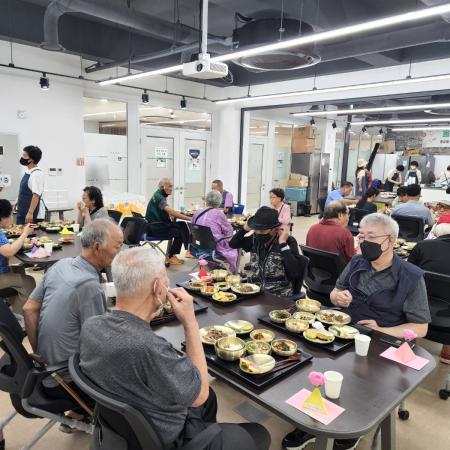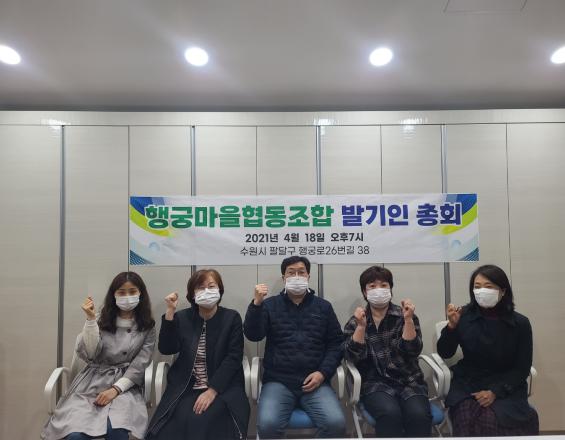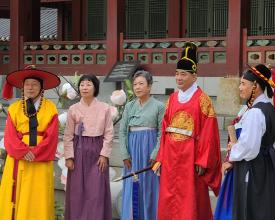
Residents as the main agent of World Heritage revitalization: the Suwon Hwaseong Haenggung-dong Village Cooperative Association

Contexte
Challenges addressed
The exclusion of local communities from heritage conservation and management efforts as well as the lack of recognition of their role as main agents of managing and utilizing World Heritage were key challenges. The voluntary contributions provided by the residents who sacrificed their own living conditions had to be transitioned into paid employment that could contribute to the local economy.
For this to happen the capacity of the local community had to be built up to establish themselves as competent and respected and capable partner to the enhance the management of the World Heritage site and enable the delivery of community benefits.
Emplacement
Traiter
Summary of the process
The Cooperative Association was formed to create job opportunities using World Heritage tourism and festivities as a driver for social welfare. This provided a chance for the heritage to benefit local residents who had previously been excluded.
The local residents were guided through a process of building capacity that formed the strong foundation for the partnership between the local government and residents. The Cooperative Association was linked with diverse local groups such as the Village Making Association and Social Security Consultative group that could harness both the needs and inputs of the local community. Such a circular relationship, linked with social welfare and volunteer work, is the backbone of building trust among actors. As the Cooperative Association was established with the objectives and principles of utilizing World Heritage, it had an identity of its own that could activate its operations independently and sustainably in accordance with the principles of the association.
Building Blocks
Haenggung Village Cooperative Association
The local residents who were previously excluded from the various cultural tourism activities and festivals centering on the World Heritage property started to independently host village activities and built up their capacities for delivering and managing events.
The initial residents group started to participate in the operations of the Suwon Heritage Night Walks in 2017 as traffic control staff. As the number of festivals that were hosted to celebrate Suwon Hwaseong as World Heritage increased, such as the Hwaseong by Night, World Heritage Festival, and Media Art Shows, the number of jobs available for the residents also increased.
The Haenggung Village Cooperative Association was established on 31 May 2021 and it consists of 46 members. The main line of work is creating content and activities for visitors.
The association is composed of 4 sub-groups each named “jigi”, which in the Korean language means friends:
- Haenggungjigi, who focuses on providing event support, information, sanitation and the operation of activities;
- Donghaengjigi, a group that creates the content and stories of the village tours;
- Surajigi that promotes and shares research and education on food;
- Cheongnyeonjigi, the group that monitors and conducts evaluations of activities.
Enabling factors
It was key to create jobs that could best optimize the capacities of the local residents. The division of work between members of Haenggungjigi, Donghaengjigi, Surajigi and Cheongnyeonjigi was fundamental to organize the work.
Lastly, all residents participating in these activities had to complete a mandatory training.
Lesson learned
Through the cooperative association that based itself on the experience of creating village activities, diverse jobs that could be directly linked to the capacities of the local residents were set up. These included positions such as event operation staff, information officers, cooks, and conducting baseline research. This made a big transition as the residents who were previously neither part of nor benefitting from the festivals could now directly be involved and be paid for their contributions.
The mandatory training for the residents who wanted to participate increased the overall capacities of the local residents and boosted their understanding of World Heritage, local values and the importance of local participation.
Capacity building as the basis for a sustainable tourism partnership
The Suwon Cultural Foundation established an objective of increasing local community participation in tourism initiatives, in order to build a sustainable tourism environment. Starting from 2013, local residents were consulted and engaged in various activities such as Sotdae making (village folk poles), Suwon Love Lantern Festivals, King Jeongjo Royal Tomb Procession events, which slowly built the knowledge of how local resident collaboration could happen.
As the content and festivities based on Hwaseong as World Heritage expanded, such as the Suwon Heritage Night Walks and World Heritage Festival, the level of community participation widened in its scope and depth. A local destination management organization has been established that could provide capacity building to showcase the example of creating a sustainable tourism ecosystem.
The increased engagement of local residents in World Heritage festivals was crucial so that they could start benefitting from World Heritage. In the past local residents had to continuously endure all the negative impacts from tourism but did not receive any benefits. In this partnership, local residents are active participants creating content, managing events and actively participating in the management and utilization of World Heritage.
Enabling factors
As the city government tried to change its way of operation in an attempt to build a sustainable tourism ecosystem, the local residents trusted the governance and started the collaboration in good faith and effort. The local government placed importance on the process of engaging the local community rather than only focusing on the immediate results and supported on a long-term basis to enhance the capacities of the residents in their role as the content creators of the local festivities.
Lesson learned
The engagement of the local community was pursued to create a sustainable tourism environment. The relationship was built on mutual trust as the city government focused on a cumulative build-up of local capacity, rather than arbitrarily contracting them for certain tasks that could be posed as a testbed. The local government provided continued technical assistance in building up the capacities of the local residents and advised them to formulate a legal entity to become independent partners to the destination management organization.
Trust gained as profits are reinvested into the local economy
There was an increased demand for employment came from diverse people, not only limited to the older generation, who also wanted the chance to contribute to the local community. This was connected with addressing the welfare issues raised by the local social security consultative group. The community members began engaging in the World Heritage festivals as an implementation partner, and the profits gained from these activities could be reinvested into local welfare support and activities focused on local residents.
Enabling factors
The Village Cooperative Association was established to create job opportunities based on tourism and festivities, which provided enhanced social welfare. Continued trust between the community members was based on equitable and transparent sharing of job opportunities and benefits gained.
Lesson learned
The needs and demands of the local community members became the focus of work and contributed to creating valued employment opportunities. The profits gained were reverted back to the local community and built communal trust, including those residents who were not part of the association. The association must increase representativity and ensure public benefit through wider participation and equitable distribution.
The profits gained from the work of the association could be reinvested in local welfare support and volunteer work such as providing joint birthday parties for senior members of the community who lived alone.
Beneficiaries
Local residents, members of the cooperative association and the future generations living in the neighborhood, and visitors. The city administration also benefitted as the main authority tasked with managing Suwon as World Heritage.
Sustainable Development Goals
Story

We started with a group of parents from Namchang Elementary School, primarily concerned about the safety of children and the elderly. The initial element that enabled us to take on this challenge was a community school, in collaboration with Sungkyunkwan University's Department of Architecture. The numerous sessions of the community school and educational programs conducted over time expanded our attention to the World Heritage Village within the local agenda.
Undoubtedly, the World Heritage site of Suwon Hwaseong Fortress very important but over the years some residents had left because they thought that development was constrained due to the World Heritage status which limited development. However, by communicating the importance of conserving the site, we were able to create a cooperative that fostered a greater sense of pride and created jobs that could contribute to the community, and provided opportunities for enjoyable and fulfilling livelihoods. When creating a cooperative for the first time, some people thought, "They will be active only temporarily." However, an increasing number of residents are trying to join the cooperative as activities continue . Although the compensation for the jobs is not substantial, everyone actively participates and they place great importance working with someone who recognizes and values their contributions.
Using the profits of the cooperative to organize birthday celebrations for the elderly living alone in the region was also of great significance to us. With funds raised by the local community welfare council to realize welfare autonomy, we prepare birthday meals for the elderly.
One of the elder women of the community said that she ‘felt like a queen’ due to the way community members treated her and she underlined her desire to continue living in Haenggung-dong. This feedback touched us and reinforced our understanding of why we should continue these activities.




















